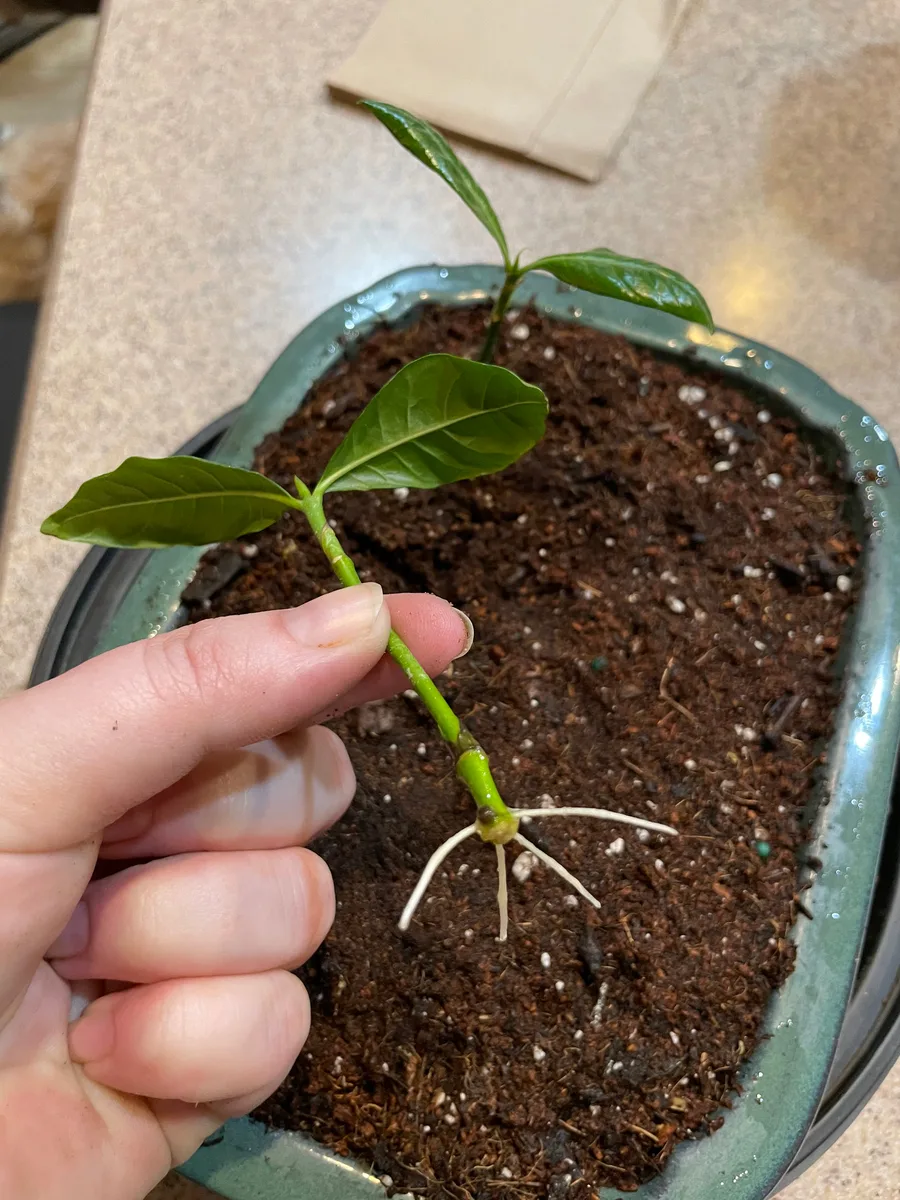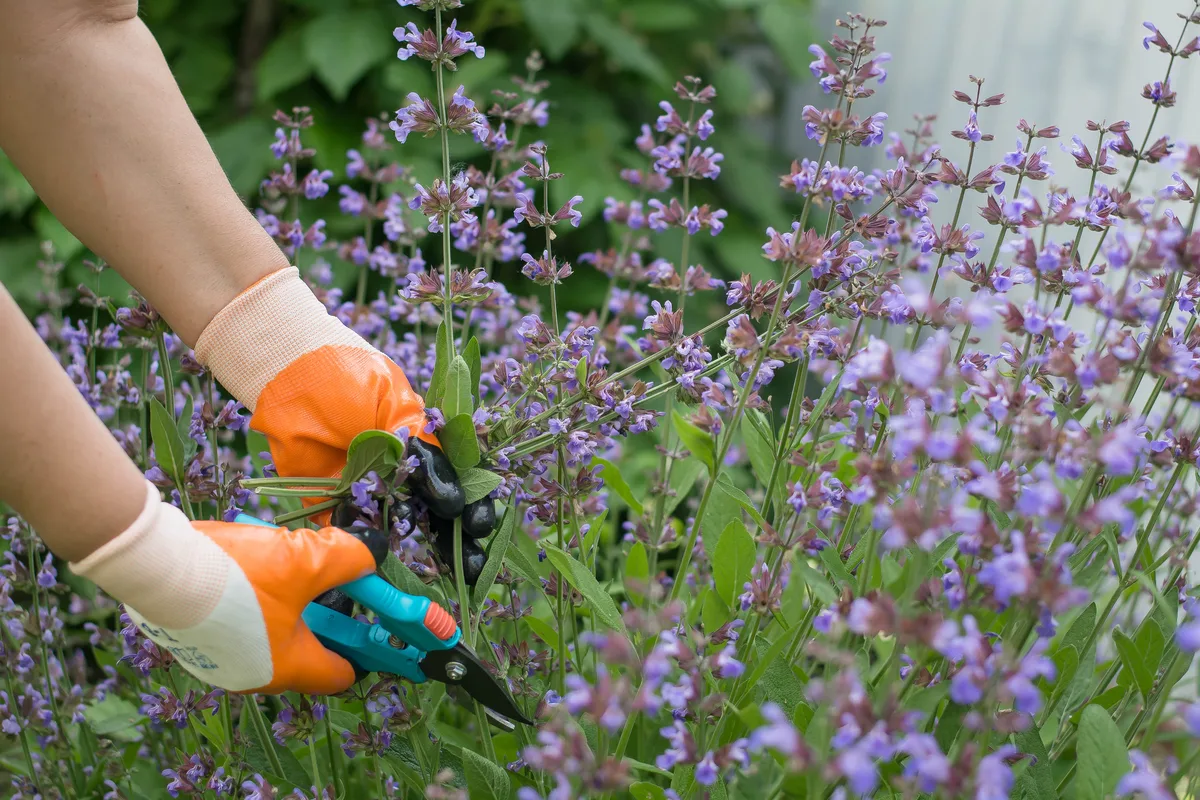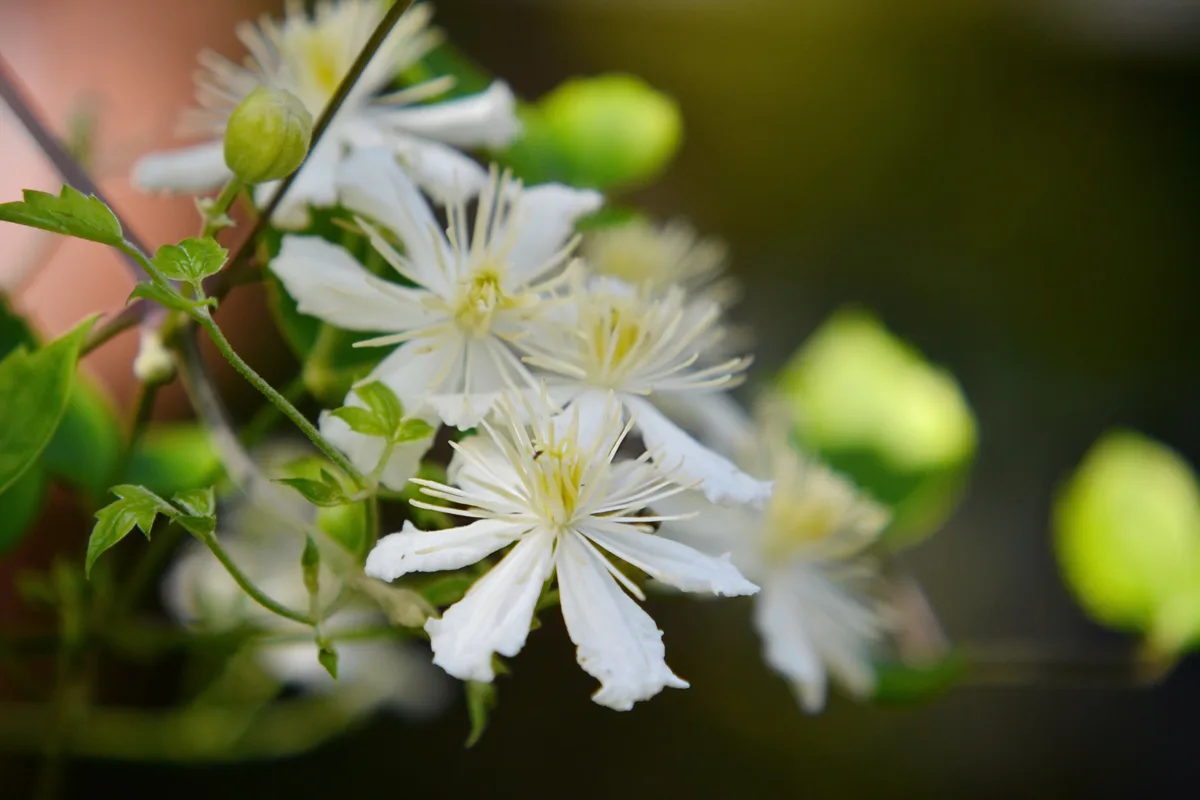
If you’re anything like me, walking into a garden center is a dangerous affair for your bank account. Even though plants aren’t particularly pricey in the larger scheme of things, it takes a lot of them to fill an entire garden. Plus, when there are so many to choose from, it’s impossible to leave your favorites behind.
Luckily, there is an essential gardening skill that can cut these costs dramatically. Once you get the hang of propagating your own plants, you can literally fill your backyard for almost nothing. If you take cuttings from your friends and neighbors, it can even be completely free.

If you are serious about propagation, it may be wise to invest in a propagation station to keep a close eye on your propagating progress and to display your cuttings in a beautiful way. Here are some of the best propagation stations available to buy.
Many garden plants can be propagated from cuttings, but these are just a few of the crowd favorites.
Herbs
There are a wide range of herbaceous plants that can be propagated from cuttings. Some are easily rooted in water, while others with woodier stems require a bit more preparation.
Lavender

The woody stems of lavender put it into the hardwood or softwood cutting category, although some people have success placing stems in water.
Lavender is one of the best plants to propagate yourself as it can be expensive depending on the species and cultivar. They are considered perennials, but tend to lose their vigor after 3 -4 years and grow better replanted. In just 2-4 weeks, you should have new plants to grow on and plant out into the garden.
Here’s my step-by-step guide to propagating lavender cuttings.
Basil

One of the easiest cuttings to grow is basil. Their soft stems do best in water, requiring little attention to produce roots.
Plus, you can’t have enough basil in the garden. Making a decent pesto or even keeping bugs away from other plants requires plenty of cuttings. Grow basil with tomatoes for the tastiest combo around.
Here’s my tutorial for propagating basil in water or soil.
Rosemary

Another one of the hard or softwood plants that are often propagated with good results is rosemary. Like lavender, rosemary can get leggy after a while, looking better if pulled from the garden and replanted.
The stems of your leftover rosemary make great meat skewers for food and they impart a lovely herby taste, adding another use for woody cuttings.
Take a look at my simple guide to propagating rosemary cuttings.
Sage

Culinary sage is a strong plant that is easy to propagate from cuttings in soil. Keep in a partially shaded area for a couple of weeks and you should see signs of new root growth.
When transplanting into the garden, move them away from the water-loving herbs like basil, dill and cilantro. They don’t like overly moist soil and grow better when conditions are slightly dry.
Here’s a great guide for propagating sage.
Mint

In ideal conditions, there may not be any need to propagate mint as it spreads incredibly quickly. In fact, it’s advisable in some areas to grow it in pots to keep it contained.
But it does grow really well from cuttings in water if you want to go that route. There are many new varieties coming out often, so a selection planted in the containers or in the garden with deep borders is wonderful to experiment with in the kitchen.
Here’s how to propagate mint by cuttings – and here’s an interesting article for propagating mint by root division.
Thyme

Thyme is a wonderful herb to use in the kitchen and a must for any herb garden. Smaller in stature, they have woody stems and need to be propagated in soil to get the best results.
Thyme loves the heat and does well in full sun to make the flavor of the leaves stronger. Propagating new plants to replace any spent plants from age or excessive harvesting will keep the best plants in play.
Here’s a simple tutorial for propagating thyme.
Marjoram

This herb is not often used in the kitchen, but should be for its delicate flavor similar to oregano. It’s often paired with vegetables and makes a perfect addition to salad dressings.
This plant is best grown from cuttings as it takes seeds a long time to germinate, making propagating quicker. Besides its uses in the kitchen, the compact and lush leaves make it a wonderful ornamental plant.
Oregano

This herb makes a great groundcover as well as a useful herb in the kitchen. It’s a bit more difficult to get cuttings to grow and it may take a little longer, but well worth the effort for this aromatic plant.
The delicate leaves are often added to cheese and tomato dishes and a pizza should not be without a few sprigs to enhance its flavor.
Here’s how to propagate oregano from cuttings.
Tarragon

Tarragon has an interesting flavor similar to licorice or anise. Its many health benefits are great added to almost any dish such as eggs, vegetables and meat like chicken or pork.
It makes a fabulous sauce for fish like salmon and can be added to salad dressings. Take cuttings, root in soil, and plant out in spring for a fresh leafy green herb.
For a full tutorial on propagating tarragon, here’s a great guide.
Chamomile

Known for its health benefits, chamomile is a great plant to propagate for its use in teas and its pretty flowers in the garden. It adds a bit more than just leafy greens to the herb garden and is a great pollinator attractor.
Take cuttings and root them in soil for 6-8 weeks before planting them in a sunny spot.
Lemon Balm

As a member of the mint family and a perennial, this herb is a great addition to the garden. It can be propagated by cuttings and rooted in water, but is better done by layering.
As the name suggests, it has a citrusy flavor and a slightly minty note that adds something different to desserts and fruit salads, or salads and vegetables dishes.
Bay leaves

A list of herbs would not be complete without bay leaves. This plant adds depth to stews, soups and sauces and is often added to pickles. They are also used fresh or dried for their flavor and then removed when the dish is served.
This large shrub or small tree can be propagated by cuttings in soil and will be rooted in 1-2 months, depending on the weather.
Here’s a guide for propagating bay laurel.
Groundcovers
Groundcovers can be costly to buy if you are filling a large space, so the best way to get a lot fast is to take cuttings and grow them in the ground where they are intended to stay. That way you can look after a large area at once and in a few weeks, they should be rooted and easy to look after themselves.
Plectranthus

There are several species of Plectranthus and no matter your choice, all of them grow well from cuttings. They are often used as houseplants but can be grown outdoors in warmer regions.
They will cover an area in less than two months in ideal conditions, planted in full sun or partial shade. And the pretty flowers that pop up in warmer seasons are an added bonus.
This is the best guide on the web for propagating plectranthus.
Golden Creeping Jenny

Lysimachia nummularia ‘Aurea’, also known as Golden Creeping Jenny, is a fast-growing groundcover that thrives in full sun or partial shade. When propagated from cuttings in spring, they cover large areas incredibly quickly.
The standard variety Lysimachia nummularia is considered invasive so depending on your area, try the golden varieties which are not as vigorous.
Here’s a full tutorial for propagating creeping Jenny.
Echeveria

Generally grown in pots, Echeverias actually make great groundcovers, forming a mat of grey leafed rosettes. These plants are incredibly easy to propagate and grow from leaf cuttings or stem cuttings, giving you plenty of options.
They deserve a mention for their tough drought-resistant nature, needing virtually no care to look good. In fact, a little neglect will go a long way – just don’t overwater them.
Learn to propagate Echeverias with this cool guide.
Silver Mound Artemisia

Silver mound artemisia is an attractive mounding grey-leaved plant easy to propagate from cuttings. Group them together for a cool and calm display, or grow them on their own as a standout feature – they will always look good.
Silver mound artemisia can be grown in full sun and partial shade. This variety is not invasive and is not a fast grower, but will last for years in the garden.
This tutorial shows you how to propagate silver mound artemisia.
Shrubs
Some shrubs are easy to grow from either softwood, hardwood or semi-hardwood cuttings. They may take longer to develop into full plants but are great for any areas that need large cover like hedges.
Azaleas

Grow extra azaleas by taking cuttings and planting in soil for new plants in a couple of months. These flowering ornamentals are great for full sun and partial shade and produce beautiful flowers in spring.
By cloning the plants in this way, they are the closest to the original plant which may not be the case when growing from seed.
This is a great tutorial for propagating azaleas.
Crepe Myrtle

Take cuttings of these beauties in spring and summer. They have stunning clusters of flowers in summer in colors like white, pink, purple and red. There are now dark-leafed varieties that are almost black which are excellent specimen plants for any garden. They are also heat and drought-tolerant.
Crape Myrtle Guy is your best source for learning how to propagate this shrub.
Gardenias

These glossy-leaved plants with their fragrant flowers are excellent garden shrubs. They are also quite easy to propagate from cuttings. Even better, this can be done when you are pruning the shrubs so the cuttings don’t go to waste. The more you plant, the more fragrant your garden will be.
Gardening Know How will walk you through growing gardenia from cuttings.
Boxwood

Take boxwood cuttings in mid-summer and take many at a time as they can be a bit reluctant to root. On the other hand, you can’t have enough boxwood, especially if you are keen on turning these leafy green plants into hedges. They can be clipped and used as screens which make them incredibly useful in a garden.
Let HortMag show you how to take and root boxwood cuttings.
Hydrangeas

Different types of hydrangeas require different cuttings, depending on weather they shoot from old wood, new wood or both. It is well worth taking cuttings of any type of hydrangeas as they are perfect space fillers, especially in areas of partial shade.
They have the prettiest blooms in all sorts of colours including blue, pink and white, and make excellent cut flowers.
Take a look at my guide to propagating hydrangeas.
Roses

It may take a while to get decent growing roses from cuttings, buts it’s not difficult to do with a bit of patience.
Roses are some of the most beautiful plants in the garden and certainly add to the landscape. On top of that, they are perfect for cutting for the vase. Choose your favorites and give propagating a chance.
Follow my step-by-step tutorial to see how to propagate roses.
Salvias

Quick growing with spikes of flowers that attract bees and butterflies, salvias are some of the most versatile garden shrubs. The many varieties come in a range of flowering colors and shrub sizes.
These are definitely worth growing from cuttings as planting loads of them is the best way to make a real splash in a garden. Most varieties can be grown from cuttings in spring.
Here’s a step-by-step guide to taking salvia cuttings from the Royal Horticultural Society.
Vines
Taking cuttings of vines usually requires taking a long piece of new growth in spring and summer around 4-6 inches long and planting in a pot so that the soil covers half the stem. Try these popular options in your garden.
Honeysuckle

Given a framework to climb up, honeysuckle will give its best in full sun or partial shade and will produce intricate blooms that have a mesmerizing aroma in summer. Flowers come in pale yellow, cream, pink, orange and red and are pollinator magnets.
You can’t beat honeysuckle for growth and fragrance with an occasional feeding and well-draining soil.
Let Gardeners World show you how to propagate honeysuckle cuttings.
Clematis

Producing beautiful large flowers in early spring and summer, clematis is worth the wait of propagating. This vigorous vine is easy to grow from cuttings and needs space to grow and climb (unless you choose a more compact variety). They like the cooler weather best and need shading in warmer climates.
This tutorial will run you through the full process for propagating clematis.
Sweet Potato Vine

These purely ornamental plants are grown for their foliage in colours ranging from lime green to bronze, dark purple, copper and black. These are not the edible variety, although those can also be grown from cuttings.
The leafy fillers are often used as contrast plants amongst other plants, growing in sun or shade. Plant several different colors for a stunning leafy display.
Here’s a guide for propagating sweet potato vine.
Jasmine

The popular fragrant Jasmine vines are great garden plants to cover unsightly walls. Grown close to the windows or doors of a home, they spread an enticing aroma when they bloom – especially at night – and are easy to propagate from cuttings.
Jasmine likes well-draining rich soil and prefer to grow in warmer climates. In colder regions, they will need protection from the cold.
Here’s how to propagate jasmine from cuttings.
If you’re looking to save money in the garden, propagation is your best bet. Some plants may take longer to develop than others, but with time and a little patience, you can reap the rewards of your efforts and fill your garden for free.
